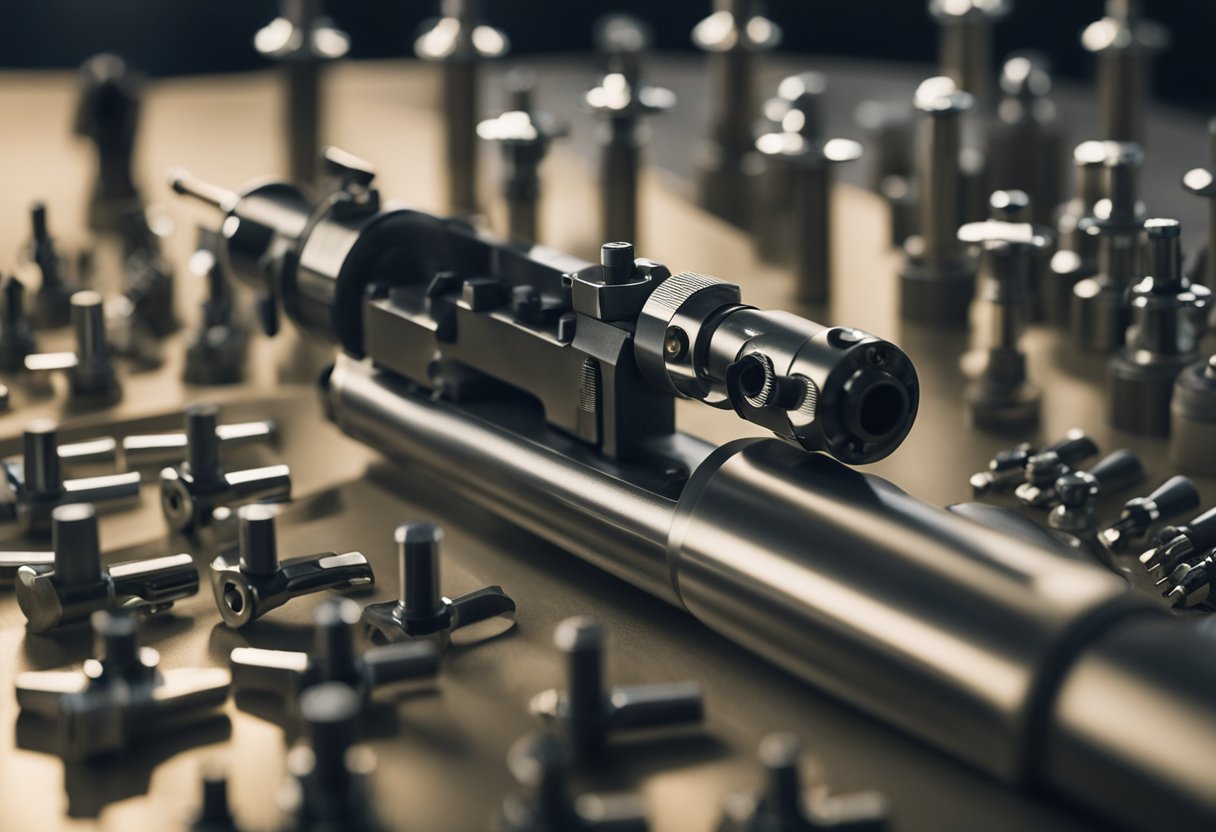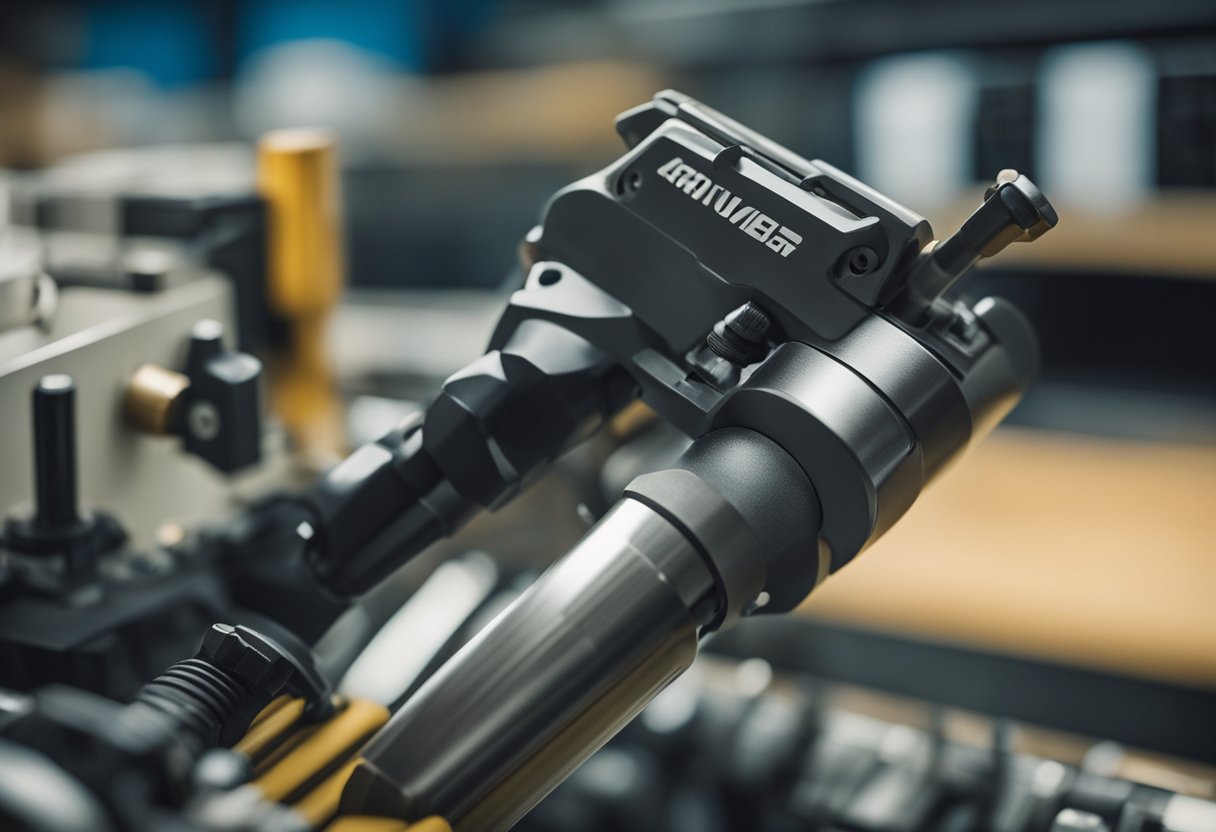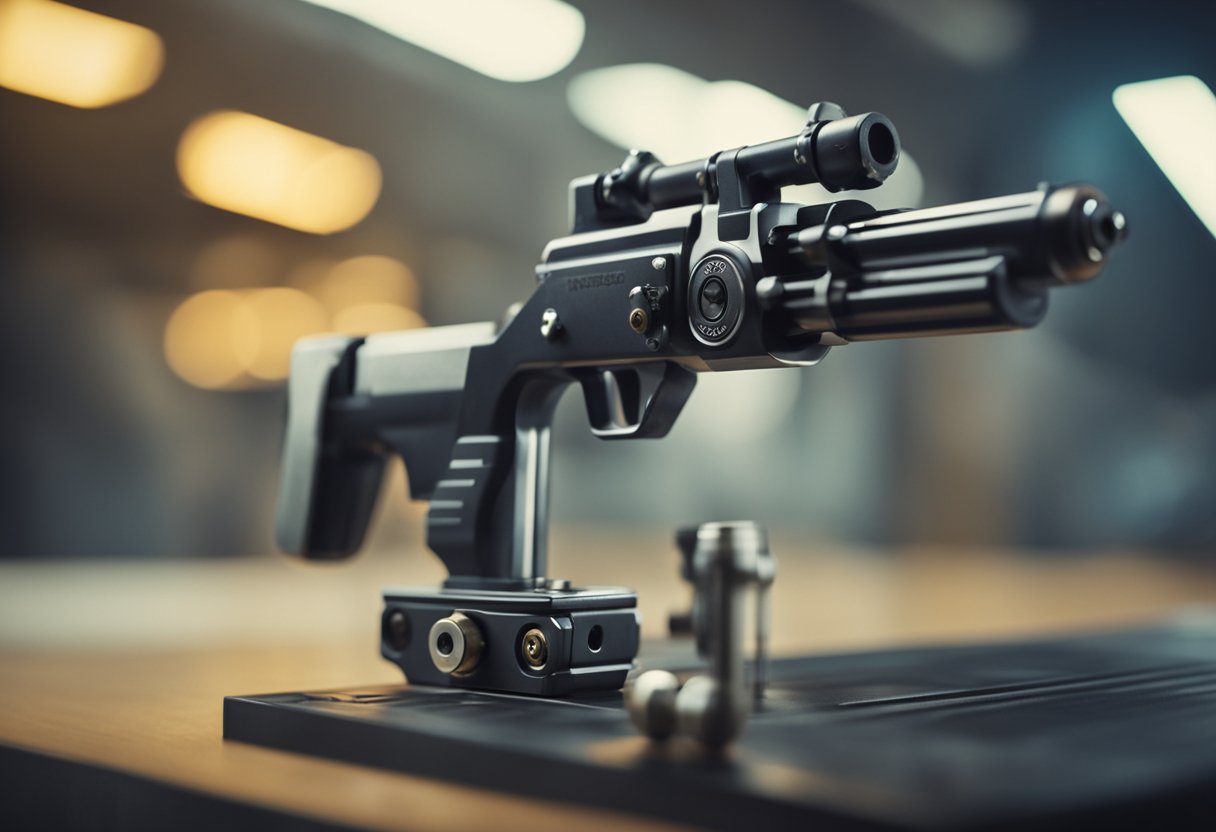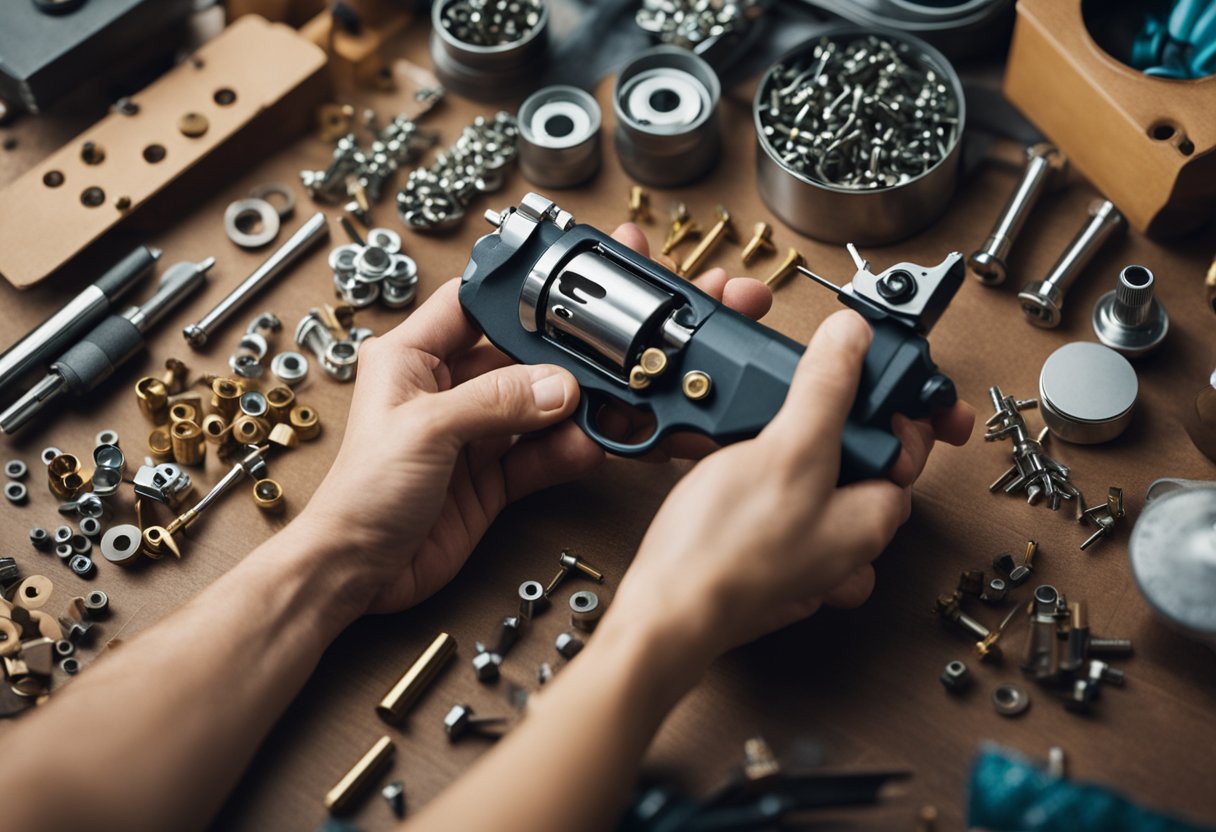As a DIY enthusiast or a professional contractor, you know how important it is to have the right tools for the job. One such tool is the Arrow Rivet Gun, which is used to fasten two materials together using a rivet. However, like any other tool, the Arrow Rivet Gun may sometimes become faulty and not work as expected.
If you find yourself in a situation where your Arrow Rivet Gun is not working, there’s no need to panic. In this article, I will provide you with some useful tips and tricks to help you troubleshoot and fix common issues that may cause your Arrow Rivet Gun to malfunction. Whether you’re a beginner or a seasoned pro, this article will provide you with the knowledge you need to get your tool back up and running in no time.
Key Takeaways
- Troubleshooting your Arrow Rivet Gun is easy with the right knowledge.
- Proper maintenance and use of your Arrow Rivet Gun can prevent common issues.
- Arrow Fastener provides additional resources and fun DIY and craft ideas for your Arrow Rivet Gun.
Understanding the Arrow Rivet Gun
https://www.youtube.com/watch?v=jSPgEs0AyTs&embed=true
As a professional in the steel construction industry, I understand the importance of having reliable tools to get the job done. One such tool is the Arrow Rivet Gun, which is commonly used for fastening two pieces of material together. However, there are times when this tool may not work as expected, causing frustration and delays in the project.
To understand how the Arrow Rivet Gun works, we need to look at its components. The gun consists of a handle, a mandrel, and a nosepiece. The mandrel is inserted into the gun’s handle and the nosepiece is attached to the end of the gun. When the handle is squeezed, the mandrel is pushed through the material and into the nosepiece, which deforms the end of the mandrel and creates a permanent fastening.
There are several reasons why the Arrow Rivet Gun may not work as expected. One common issue is that the mandrel may not be properly inserted into the gun’s handle. This can cause the mandrel to jam or not feed correctly, which can result in a failed fastening. To avoid this issue, it’s important to make sure the mandrel is properly inserted and that the gun is loaded correctly.
Another issue that can cause the Arrow Rivet Gun to malfunction is the nosepiece. Over time, the nosepiece can become worn or damaged, which can affect the quality of the fastening. It’s important to regularly inspect the nosepiece and replace it if necessary to ensure consistent and reliable performance.
In conclusion, the Arrow Rivet Gun is a valuable tool for professionals in the steel construction industry. Understanding its components and potential issues can help ensure that it works properly and consistently. By regularly inspecting and maintaining the gun, you can avoid frustrating delays and ensure that your projects are completed on time and to the highest standards.
Common Issues and Troubleshooting
https://www.youtube.com/watch?v=PSLnYnjEU9o&embed=true
As an experienced arrow rivet gun user, I have come across several common issues that may cause the tool to malfunction. Here are some of the issues and troubleshooting tips to help you get your arrow rivet gun working again.
Debris Buildup
One of the most common issues that can affect the performance of your arrow rivet gun is debris buildup. Over time, debris can accumulate inside the tool and cause it to malfunction. To fix this issue, you should disassemble the tool and clean the inside thoroughly. Use a soft-bristled brush to remove any debris that may be stuck inside the shaft or nose piece.
Spring or Shaft Issues
If your arrow rivet gun is not working properly, it may be due to issues with the spring or shaft. Check the spring and shaft for any signs of damage or wear and tear. If you notice any issues, you should replace the damaged parts to ensure that the tool works properly.
Nose Piece Issues
Another common issue that can affect the performance of your arrow rivet gun is nose piece issues. If the nose piece is not properly aligned or is damaged, it can cause the tool to malfunction. Check the nose piece for any signs of damage or misalignment. If you notice any issues, you should replace the nose piece to ensure that the tool works properly.
Air Pressure Issues
If your arrow rivet gun is not working properly, it may be due to air pressure issues. Check the air pressure gauge to ensure that the tool is getting enough air pressure. If the air pressure is too low, the tool may not work properly. Adjust the air pressure to the recommended level to ensure that the tool works properly.
Pull or Push Issues
If your arrow rivet gun is not working properly, it may be due to pull or push issues. Check the pull and push mechanisms to ensure that they are working properly. If the mechanisms are not working properly, the tool may not work properly. Adjust the mechanisms to ensure that the tool works properly.
Overall, by following these troubleshooting tips, you can fix most common issues that may cause your arrow rivet gun to malfunction. If you are still having issues with your tool, it may be best to consult with a professional or the manufacturer for further assistance.
Maintenance Tips and Tricks
https://www.youtube.com/watch?v=6OePBkMJ8rw&embed=true
As an experienced user of Arrow rivet guns, I have learned a few tips and tricks over the years that can help keep your tool in good working order. Here are some of my recommendations:
-
Regularly lubricate your rivet gun with air tool oil. This will help keep the moving parts working smoothly and prevent rust and corrosion. I recommend putting 3 to 4 drops of air tool oil in the gun’s air inlet before connecting the air hose. If you use the tool over several days, lubricate it at the beginning of each day. 1
-
Inspect the arrow tips regularly. The arrow tips can wear out over time and become dull, which can make it difficult to insert rivets. If you notice that your arrow tips are worn, replace them as soon as possible. You can easily replace the arrow tips by unscrewing them from the tool and screwing in new ones. 2
-
Clean the handle lock teeth. The handle lock teeth can become dirty or clogged with debris, which can prevent the handle from locking properly. If you notice that the handle lock is not working correctly, clean the teeth with a toothbrush or a small brush. This should help the handle lock engage more smoothly. 3
By following these simple tips and tricks, you can help ensure that your Arrow rivet gun continues to work reliably and efficiently. If you have any other maintenance tips or tricks, feel free to share them in the comments below.
Using the Arrow Rivet Gun for Different Projects
https://www.youtube.com/watch?v=SRf54mDC3EA&embed=true
As an avid DIY enthusiast, I have found the Arrow Rivet Gun to be a versatile tool that can be used for a wide range of projects. Whether you are working on automotive repairs, installing gutters, or replacing storm doors, the Arrow Rivet Gun can handle the job.
For lightweight jobs, such as attaching fabric to a wooden frame or securing lightweight metal sheets, the Arrow Rivet Gun is an excellent choice. With its compact size and easy-to-use design, it is perfect for small projects around the house.
However, for heavy-duty jobs, such as attaching sheet metal or repairing a car frame, you will need a more powerful rivet gun. The Arrow Rivet Gun is not designed for heavy-duty use, so it may not be the best choice for these types of projects.
When working on automotive projects, the Arrow Rivet Gun can be used to attach trim pieces, secure upholstery, and even replace broken parts. It is also great for installing gutters, as it can quickly and easily attach the gutter sections together.
One thing to keep in mind when using the Arrow Rivet Gun is to make sure you are using the correct size rivets for your project. Using the wrong size rivets can cause the rivets to fail or the tool to not work properly.
Overall, the Arrow Rivet Gun is a reliable tool that can be used for a variety of projects. Whether you are a DIY enthusiast or a professional contractor, the Arrow Rivet Gun is a must-have tool for your toolbox.
Types of Rivets and Their Uses
As someone who regularly uses an Arrow rivet gun, I know that choosing the right type of rivet is crucial for the success of any project. Rivets are fasteners that join two or more materials together, and they come in a variety of types and sizes. In this section, I will discuss the most common types of rivets and their uses.
Solid Rivets
Solid rivets are the oldest and most reliable type of rivets. They consist of a shaft and a head, and are used for general purposes. Solid rivets can be installed using a hammer or a rivet gun. They are the strongest type of rivets and are often used in applications where safety and reliability are critical.
Blind Rivets
Blind rivets, also known as pop rivets, are a type of rivet that can be installed from one side of the workpiece. They are often used in applications where access to the back of the workpiece is limited. Blind rivets consist of a mandrel and a sleeve. When the mandrel is pulled, the sleeve deforms and expands, creating a secure joint.
Steel Rivets
Steel rivets are a common type of rivet that are known for their strength and durability. They are often used in applications where high strength is required, such as in construction and automotive industries. Steel rivets can be installed using a hammer or a rivet gun.
Aluminum Rivets
Aluminum rivets are a lightweight and corrosion-resistant type of rivet. They are often used in applications where weight is a concern, such as in aerospace and marine industries. Aluminum rivets can be installed using a hammer or a rivet gun.
Pin Rivets
Pin rivets, also known as split rivets, consist of a head and a split shaft. They are often used in applications where the workpiece is too thin for other types of rivets. Pin rivets can be installed using a hammer or a rivet gun.
In conclusion, choosing the right type of rivet is crucial for the success of any project. Solid rivets, blind rivets, steel rivets, aluminum rivets, and pin rivets are the most common types of rivets, each with their own unique characteristics and uses. As a confident and knowledgeable user of Arrow rivet guns, I always make sure to choose the right type of rivet for the job at hand.
How to Disassemble and Reassemble Your Rivet Gun
https://www.youtube.com/watch?v=sYWum3iiWI8&embed=true
As a professional who uses the Arrow rivet gun regularly, I understand how frustrating it can be when the tool stops working or gets jammed. In such cases, disassembling and reassembling the tool may be necessary to fix the issue. Here’s a step-by-step guide on how to disassemble and reassemble your Arrow rivet gun:
Disassembling Your Rivet Gun
- First, make sure that your rivet gun is not loaded with any rivets. If it is, remove them from the tool.
- Next, grip the tool firmly and locate the nosepiece. This is the part of the tool that holds the rivet in place.
- Turn the nosepiece counterclockwise to unscrew it from the tool. You may need to use some force to do this, as it may be screwed on tightly.
- Once the nosepiece is removed, you should be able to see the mandrel, which is the part of the rivet that gets pulled through the workpiece. Remove the mandrel from the tool.
- Finally, remove the remaining parts of the tool, such as the handle and the spring.
Reassembling Your Rivet Gun
- To reassemble your rivet gun, start by inserting the spring into the handle.
- Next, insert the handle into the body of the tool and screw on the nosepiece clockwise.
- Once the nosepiece is screwed on tightly, insert the mandrel back into the tool.
- Finally, load your rivet gun with rivets and test it to make sure it’s working properly.
Remember, if you’re unsure about disassembling or reassembling your rivet gun, it’s always best to consult the manufacturer’s instructions or seek professional help. By following these steps, you can ensure that your Arrow rivet gun is working properly and avoid any unnecessary downtime on the job.
Arrow Fastener: Who We Are and What We Offer
As a leader in manual, electric, cordless fastening, and hand stapling tools, Arrow Fastener Company LLC has been providing high-quality and reliable tools for nearly 90 years. Our products include staple guns, hammer tackers, nail guns, and rivet tools. We are confident in our ability to provide you with the right tool for the job, no matter the task at hand.
At Arrow Fastener, we are committed to providing our customers with the best possible experience. That’s why we offer a variety of promos and discounts to help you save money on your purchase. Sign up for our newsletter to receive exclusive deals and offers straight to your inbox.
We take your privacy seriously and are committed to protecting your personal information. Our privacy and cookie policies are designed to ensure that your data is safe and secure. You can trust us to keep your information confidential and only use it for the purposes outlined in our policies.
In this article, we will discuss common issues that users may experience with the Arrow Rivet Gun and offer solutions to help you get the most out of your tool. We want to ensure that you have a positive experience with our products and are confident in your ability to complete any project with ease.
Additional Resources
If you’re having trouble with your Arrow rivet gun, don’t worry, there are plenty of resources available to help you fix the issue. Here are some additional resources that may be useful:
Videos
There are many videos available on YouTube that demonstrate how to fix common issues with Arrow rivet guns. For example, this video shows how to fix an Arrow rivet gun that is not working properly. Watching a video can be helpful because you can see exactly what to do and how to do it.
Tool Tips
Arrow Fastener has a section on their website called “Tool Tips” that provides helpful information on how to use their tools. The Tool Tips section includes articles on how to use Arrow rivet guns, as well as other Arrow Fastener tools. You can find the Tool Tips section on the Arrow Fastener website.
How-To Help
If you’re not sure how to fix your Arrow rivet gun, there are many online resources available that can help. Websites like DIY Stack Exchange have forums where you can ask for help from other DIY enthusiasts. You can also find helpful articles and tutorials on websites like Instructables and eHow.
Tool Spotlight
Arrow Fastener has a section on their website called “Tool Spotlight” that provides detailed information on their tools. The Tool Spotlight section includes articles on Arrow rivet guns, as well as other Arrow Fastener tools. You can find the Tool Spotlight section on the Arrow Fastener website.
Arrow Fastener Tool Tips on Pinterest
Arrow Fastener has a Pinterest page that includes a board called “Tool Tips.” The Tool Tips board includes helpful information on how to use Arrow Fastener tools, including Arrow rivet guns. You can find the Arrow Fastener Pinterest page by searching for “Arrow Fastener” on Pinterest.
Remember, if you’re having trouble with your Arrow rivet gun, there are many resources available to help you fix the issue. Don’t hesitate to seek out help if you need it.
Fun DIY and Craft Ideas with Arrow
As someone who loves DIY projects, I have found that Arrow rivet guns are an essential tool to have in my toolbox. Not only are they great for home repairs and renovations, but they can also be used for fun craft projects. Here are a few ideas to get you started:
Craft Ideas for Kids
If you have kids, then you know how important it is to keep them entertained. Arrow rivet guns can be a great tool for creating fun and unique craft projects with your kids. For example, you can use the rivet gun to create a cardboard castle or a playhouse. You can also use it to make a birdhouse or a bird feeder. The possibilities are endless, and your kids will love being able to help you create something special.
Home Makeover
If you’re looking to give your home a makeover, then Arrow rivet guns can be a great tool to have on hand. You can use them to create custom window treatments or to add decorative trim to your walls. You can also use them to create custom furniture pieces, such as a headboard or a bench. With a little creativity, you can use your Arrow rivet gun to transform your home into a beautiful and unique space.
DIY Projects for the Home
Arrow rivet guns are also great for DIY projects around the home. For example, you can use them to create custom shelving units or to add decorative trim to your cabinets. You can also use them to create custom light fixtures or to add decorative accents to your walls. The possibilities are endless, and with a little creativity, you can use your Arrow rivet gun to create a beautiful and functional space.
Arrow Fastener Fun Project
Arrow Fastener has a range of fun and creative project ideas on their website, from creating a custom picture frame to building a garden trellis. These projects are designed to be easy and fun, and they can be completed in just a few hours. With the help of your Arrow rivet gun, you can create something special that you can be proud of.
In conclusion, Arrow rivet guns are a versatile and essential tool for any DIY enthusiast. Whether you’re working on a home renovation project or a fun craft project with your kids, an Arrow rivet gun can help you create something special. With a little creativity and imagination, the possibilities are endless.
Frequently Asked Questions
How to disassemble Arrow RHT300?
To disassemble the Arrow RHT300, first, make sure the rivet gun is unplugged or the air supply is disconnected. Next, remove the nosepiece by unscrewing it counterclockwise. Then, remove the mandrel container by pulling it straight out of the tool. Finally, remove the mandrel ejector by pulling it straight out of the tool.
How to remove a stuck rivet from a rivet gun?
To remove a stuck rivet from a rivet gun, first, try to pull it out with a pair of pliers. If that doesn’t work, try to use a punch and hammer to knock it out from the other side. If it’s still stuck, try to drill it out with a drill bit that’s slightly larger than the rivet’s diameter. Be careful not to damage the surrounding material.
How to maintain a rivet gun?
To maintain a rivet gun, first, make sure to clean it after each use. Use a soft cloth to wipe down the tool and remove any debris. Next, oil the tool according to the manufacturer’s instructions. Finally, store the tool in a dry place to prevent rust.
How to use a rivet gun properly?
To use a rivet gun properly, first, select the appropriate size and type of rivet for your application. Next, insert the mandrel into the nosepiece and load the rivet into the tool. Then, place the tool over the workpiece and squeeze the trigger to set the rivet. Be sure to hold the tool perpendicular to the workpiece to ensure a proper set.
Why is my rivet gun not biting?
If your rivet gun is not biting, it could be due to a few reasons. First, check to make sure the nosepiece is properly aligned with the mandrel. Next, check to make sure the mandrel is properly loaded into the tool. Finally, make sure the workpiece is properly aligned and the tool is held perpendicular to the workpiece.
Why does my rivet gun keep jamming?
If your rivet gun keeps jamming, it could be due to a few reasons. First, check to make sure the mandrel is properly loaded into the tool. Next, make sure the workpiece is properly aligned and the tool is held perpendicular to the workpiece. Finally, check to make sure the tool is properly lubricated and clean.
Footnotes

Hi, I’m Sal Muller of Tooltrip.com. My DIY experience led me to understand essential power tools for home projects. Tooltrip.com guides enthusiasts and professionals in choosing right tools for any job. I provide concise top tool reviews for easier, efficient DIY.







